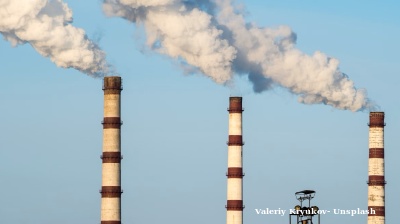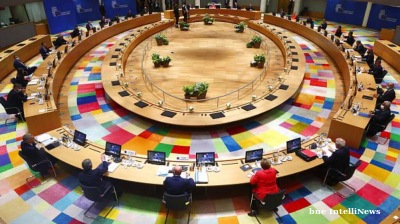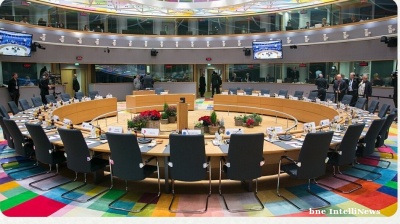In February 2025 the three Baltic states disconnected from Russia’s energy grid, the culmination of a 15-year pan-regional project that was suddenly accelerated after Russia’s invasion of Ukraine.
But after the three countries joined the European grid, making a decisive break from energy dependence on Russia, what’s next? Representatives of the energy sectors in Estonia, Latvia and Lithuania outlined their plans for the coming years at a panel at the European Bank for Reconstruction and Development (EBRD) annual meeting on May 14.
The Baltic states are aiming to become self-sufficient and even net exporters of electricity as they step up investment in renewables, energy storage and grid interconnections, officials said.
Aside from the political dimension, the move unlocked major benefits, including eliminating the risk of critical dependence on Russia for secure system operations and levelling the playing field for power suppliers by ensuring EU environmental compliance.
"Many people saw it as a technical project, but that’s only part of it," said Riina Käi, CFO and board member of Estonia’s Elering. "This was a 15-year project that became urgent in 2022. When we started, no one believed it would be done, but the three Baltic states and the rest of Europe made it happen – ahead of schedule.”
Highlighting the significance of the Baltic States’ disconnection from Russia, Grzegorz Zieliński, director and head of energy, Europe at the EBRD, told the panel: “The power grid in the Baltic states was designed almost 100 years ago. It was a Soviet system. It wasn’t a system for three independent Baltic states that are now part of the European Union.”
“This is only a beginning,” Käi continued. "We are developing new markets, integrating renewables and managing the grid with battery storage. It’s only the beginning."
Baltic transmission system operators (TSOs) have invested heavily in recent years to strengthen grids and interconnections, creating capacity for more renewable energy and increasing system flexibility.
"All three countries have ambitions to become self-sufficient and turn this into a net exporting region within five years,” said Gatis Junghans, member of the management board at Latvian power transmission system operator Augstsprieguma Tīkls, noting that more than 3 GW of wind and solar capacity were added in 2023, with another 3 GW expected this year.
However, to meet the goals of energy self-sufficiency, the region will need to double its current electricity capacity, expand cross-border links with the rest of Europe, and invest in grid resilience and defence of critical infrastructure, Junghans pointed out.
"We’re also looking at horizontal connections to the Nordic and continental European grids," Junghans. "This will require massive investment."
Funding the green transition in the Baltics remains a challenge. Dainius Vilčinskas, managing director of Lithuanian energy firm ILTE, warned that low electricity prices and limited capital market development are undermining the financial viability of new energy projects.
"Investor interest has declined because electricity has become very cheap," he said. "That makes for a weaker business case and higher risk for financing partners."
Vilčinskas said conservative local banks dominate the financial landscape and that large institutional investors have yet to discover the region. The region has also been affected by Russia’s war in Ukraine.
One solution is to encourage more businesses to switch to electricity, thus driving up demand as well as reducing the use of fossil fuels.
“We see in Lithuania new projects being initiated but sad that after the war was started we see less foreign investment coming to the Baltic region due to geopolitical risks. Luckily local businesses are becoming quite active.”
Vilčinskas also stressed the critical role of international financial institutions like the EBRD in sustaining the investment momentum.
"Now businesses are coming up with new projects – batteries, energy storage – but again they face financing constraints because this is a completely new sector," he said.
Despite the challenges, the EBRD sees the Baltic energy transition as a model for other regions, officials said.
Charlotte Ruhe, EBRD managing director for Central and South Eastern Europe, said the cooperation among the Baltic states has been exceptional. "I don’t know of any countries that have worked together so closely on energy," she said.
The EBRD said it will continue to work with governments and businesses in the Baltics to test new financial instruments and support infrastructure development.
bneGREEN

China’s COP30 climate pledge will shape global emissions story - CREA
The COP30 summit in Belém, Brazil, kicks off on November 10 and will be very closely watched as one of the last opportunities to avert the very worst of the Climate catastrophe. And China's speech will be watched most closely of all.

Europe’s summer heatwaves killed more than 16,000 people
The heatwaves that swept the Continent were responsible for more than two-thirds of the 24,400 heat-related deaths estimated in Europe this summer, or 16,266 people, according to a new study conducted by scientists at Imperial College London.

L&T secures order for Kudankulam nuclear project expansion in India's Tamil Nadu
Indian engineering giant Larsen & Toubro has secured a major order valued at up to $285mn from the state-owned Nuclear Power Corporation of India Ltd for works at the Kudankulam nuclear power plant in Tamil Nadu

India sees drop in CO2 emissions as renewables accelerate
India’s power sector has recorded an unusual dip in carbon dioxide output, with emissions falling by 1% in the first half of 2025 compared with a year earlier.




